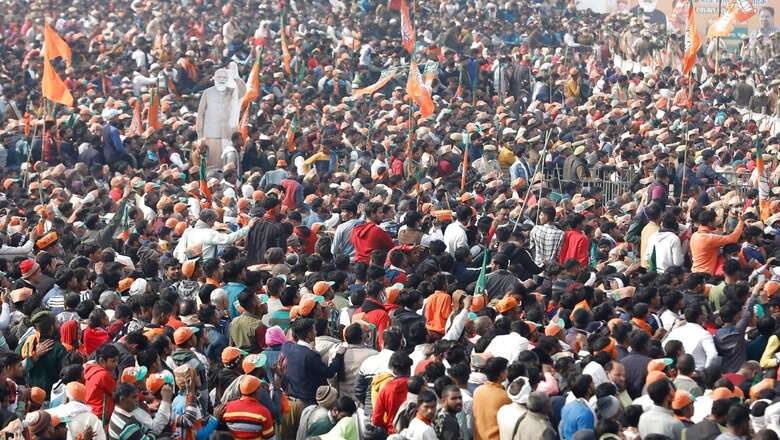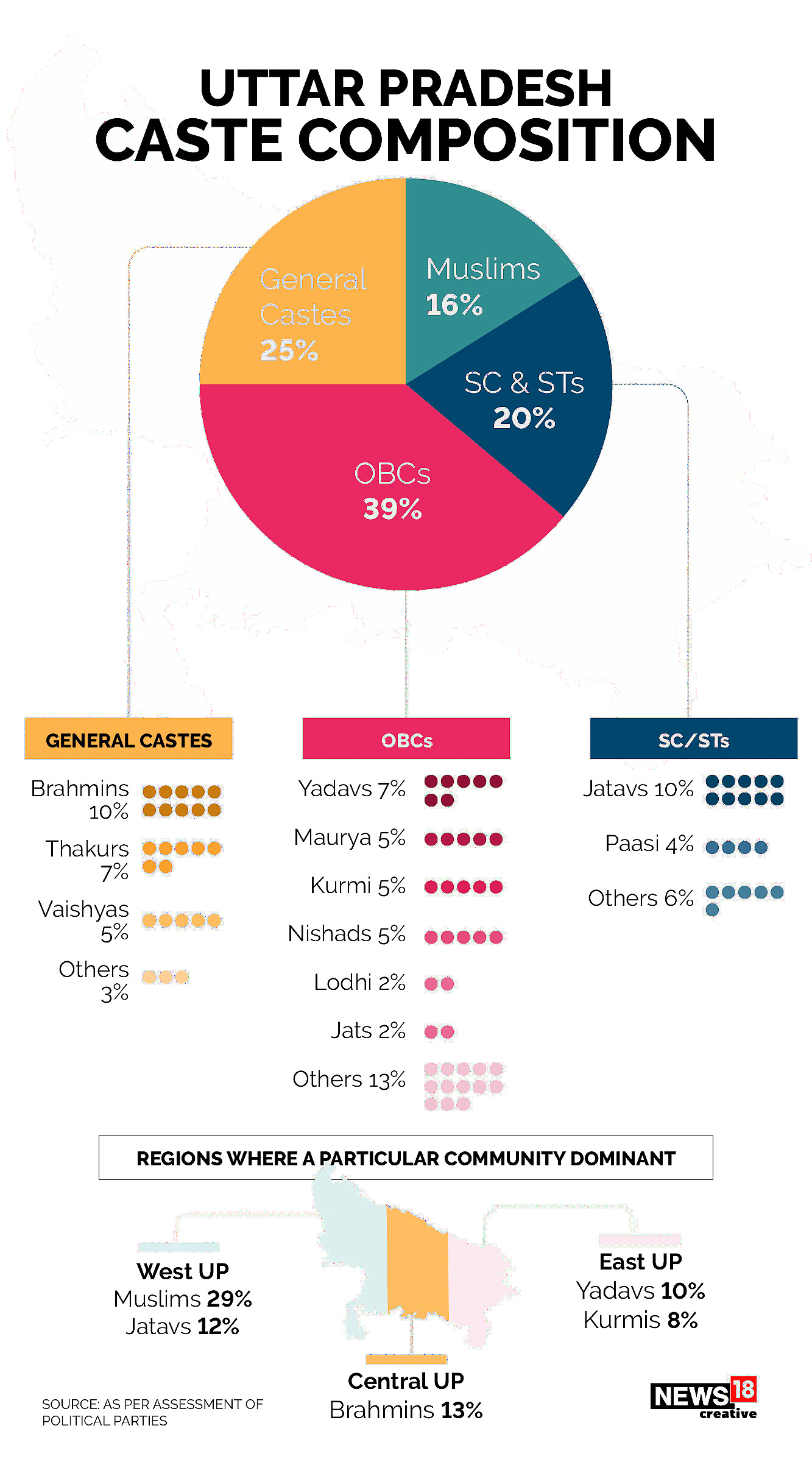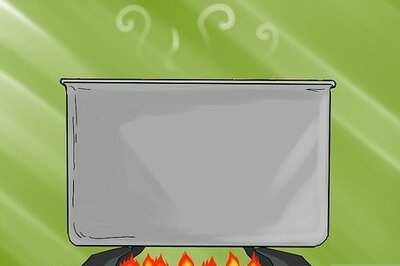
views
Riding on the Narendra Modi wave, a consolidation of the non-Yadav OBC and non-Jatav Dalit castes along with its traditional upper-caste vote bank, and a bitter division in the Muslim vote, the BJP rode to power in Uttar Pradesh in 2017 with a whopping 40% vote share and 312 seats, a feat not achieved by any party for over two decades.
In 2019 Lok Sabha elections, the BJP’s vote-share rose to 50%, despite an SP-BSP alliance which polled 38% votes. In the Uttar Pradesh elections 2022, the SP and BSP are contesting separately, but the former is claiming that it will form the government alone with a big caste consortium on its side under the banner of ‘Samajik Nyaay’ (Social Justice), a phrase coined by the party’s former chief minister, Akhilesh Yadav.
This claim has got further impetus with non-Yadav OBC leaders from both the BJP and the BSP making a beeline for the Samajwadi Party. BJP leaders claim such leaders are no longer representative of the non-Yadav OBCs who remain firmly with the BJP under Narendra Modi, “the tallest OBC leader in India”, while SP leaders claim if its caste calculus falls right as it envisions, it could cross 300 seats this time.
The UP Caste Arithmetic
Let us understand the UP caste arithmetic first. As per assessment of political parties, the state is roughly made up of 25-27% general castes (including 10% Brahmins and 7% Thakurs), 39%-40% OBCs (including 7-9% Yadavs and 4% Nishads), around 20% SCs and STs (including 10% Jatavs), and 16-19% Muslim population. There are no definite percentages known for each caste given that there has been no caste census.

There are five main voting groups in UP — Upper Castes, Muslims, non-Yadav OBCs, Yadavs and Jatavs. Governments in UP in the past have been formed with just 30% vote share by bagging votes of two full groups and bits from the non-Yadav OBCs — SP did so in 2012 with its Muslim-Yadav combination and BSP did it in 2007 with its Muslim-Jatav combination. In then multi-cornered contest with BJP and Congress as smaller players, the SP and BSP were able to do so.
What Changed in 2017
Riding on the Narendra Modi wave from 2014, BJP went into the UP elections in 2017 with a clear pitch to consolidate the non-Yadav OBCs and non-Jatav SCs in its favour. It did so on three pitches. One, that it had given all these communities benefits of various schemes launched by the Centre, from toilets to LPG cylinders.
Two, it gave an avenue to their frustration that Yadavs and Jatavs cornered all appeasement in SP and BSP regimes, respectively, along with Muslims. Non-Yadav OBCs were unhappy over lawlessness of Yadavs in SP rule.
Three, the BJP projected four faces on its banners in Rajnath Singh (Thakur), Kalraj Mishra (Brahmin), Keshav Maurya (Maurya, Non-Yadav OBC) and Uma Bharti (Lodh, non-Yadav OBC).
BSP’s Brahmin face Brajesh Pathak was inducted along with Rita Bahuguna Joshi. Swami Prasad Maurya was inducted from the BSP, while Kurmi face Anupriya Patel of Apna Dal was inducted into the Council of Ministers as non-Yadav OBC face.
After Yadavs, Mauryas at 6-7% and Kurmis at 5% were the biggest non-Yadav OBC vote banks in UP. Lodh have 3% population so Kalyan Singh’s grandson was made a UP minister.
In a nutshell, BJP targeted an over 60% vote bank — 10% Brahmin vote, 12% Thakur and Vaishya voters, 33% non-Yadav OBC vote and 7-10% non-Jatav Dalit vote. It managed to get 40% vote in 2017 as it got votes of almost three-and-a-half major groups.
Further, Muslim votes got divided between the SP-Congress alliance and BSP. While Muslims voted for the alliance in west UP where they are 29% of the electorate, Muslims in other parts of UP voted for the BSP.
Jats, who are at 2% population among OBCs, also voted to some extent for the BJP. In 2019, the BJP built upon this formula to corner a higher 50% vote share.
Have Things Changed Now>
The SP says the situation has changed in 2021 as the BJP made a ‘Thakur’ Chief Minister in Yogi Adityanath. It says some of his actions have angered the Brahmins as well as the non-Yadav OBCs, and that caste bank of the BJP has splintered. This, it says, reflects in the beeline of such leaders towards the SP now, including three sitting OBC ministers.
The SP also says that the election is now bipolar, with BSP and Congress on the sidelines. Hence, it believes, the entire anti-BJP vote, especially the Muslim vote, will come to the SP without any division.
The political wisdom in the state is that whichever party crosses 35% vote share this time will be able to form the government. The BJP, however, maintains that the non-Yadav OBC voter remains with it and desertion of some leaders of that community won’t impact the voters.
It points out that all three ministers who quit the BJP had come from the BSP in the last elections and were not “true-blood BJP workers”. BJP believes Narendra Modi and Yogi Adityanath remain highly popular.
The BJP believes it will not drop below 40% vote share, and will form a government easily despite the three-decade old political custom of the state to vote out governments and no party repeating a term.
It cites a case in point of how it may have lost Om Prakash Rajbhar as an ally from 2017 while Rajbhar have 1-2% population, but has got the Nishad party as an ally now which has 4-5% population in UP. BJP leaders claim SP won’t cross the 30% vote mark despite best efforts and BSP will remain a factor with at least 20% vote share in 2022.
Which side will the caste arithmetic favour? We will know March 10.
Read all the Latest Politics News here




















Comments
0 comment